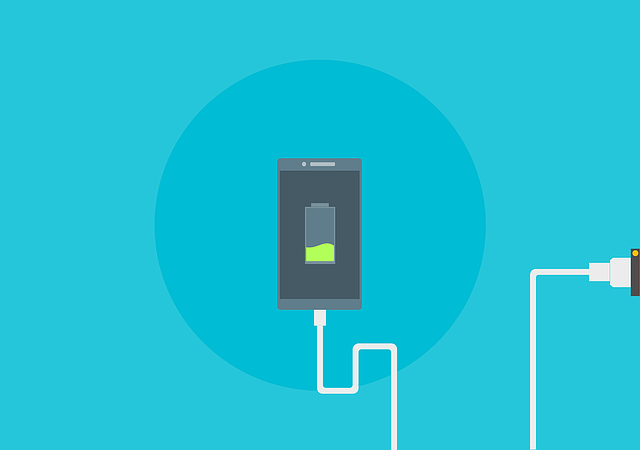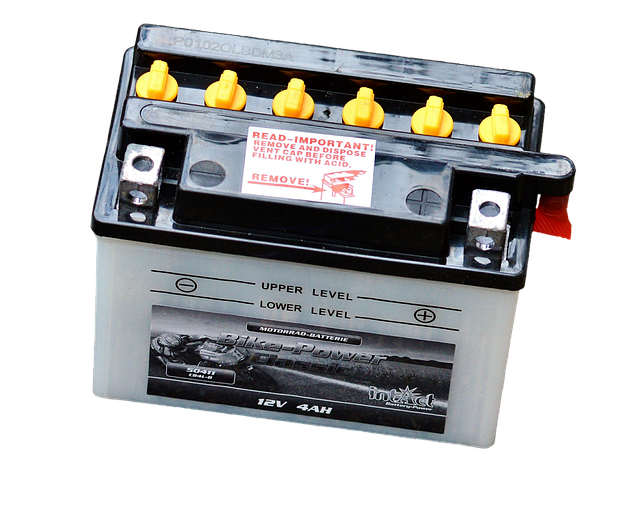Your device's battery lifespan is crucial for its performance and reliability. As it ages, you may notice signs such as reduced charge retention, frequent charging, longer charging times, spontaneous system shutdowns or restarts, abnormal heating during usage, and persistent battery error messages. These are clear indicators that your battery's capacity is degrading and that a replacement might be necessary. Promptly addressing these issues by replacing the battery can restore your device's efficiency, prevent unexpected power loss, and maintain stable operations. Regular monitoring of your device's battery health and timely replacements are key to ensuring optimal functionality and safety, as well as extending the overall lifespan of your electronic device.
When the lifeline of your electronic devices—the battery—begins to falter, it’s time to consider a replacement. This article outlines five definitive signs that signal it’s time to replace your battery, ensuring peak performance and longevity for your device. From recognizing swelling or bulging cases to noticing frequent system shutdowns, these indicators will guide you through the process of determining whether a battery change is imminent. Understanding the nuances of battery health, such as corroded terminals, reduced charging efficiency, and abnormal temperatures, is crucial for maintaining device functionality. Learn the essential steps to take when your battery’s lifespan has reached its limit, and how to address these issues promptly and effectively.
- Understanding Battery Lifespan and Indicators for Replacement
- Swelling or Bulging of the Battery Case
- Diminished Holding Charge and Increased Charging Time
- Frequent System Shutdowns or Restarting Without Prompt
- Visible Corrosion on Battery Terminals
- Lack of Power in Devices Despite a Full Charge Indicator
- Unusual Battery Temperatures and Overheating Issues
- Consistent Error Messages or Warnings Related to the Battery Health
Understanding Battery Lifespan and Indicators for Replacement

When a battery begins to age, its performance can diminish significantly, which is why it’s crucial to be vigilant about understanding your battery’s lifespan and recognizing when it’s time to replace it. Typically, a battery’s lifespan is determined by its charge cycles; most batteries will last anywhere from 300 to 500 full cycles before their capacity starts to wane. To gauge this, pay close attention to the battery’s ability to hold a charge and deliver power consistently. If you notice that your device is no longer holding a charge as long as it used to, or if it requires frequent recharging, this could be an early sign that the battery’s lifespan is nearing its end. Additionally, a significant drop in battery capacity or voltage, leading to poor performance or an inability to power your device fully, is another clear indicator that replacing the battery may be imminent. Regularly monitoring these aspects can help you preemptively replace your battery before it fails completely, ensuring optimal device functionality and longevity. It’s advisable to consult your device’s manual or a professional for specific guidelines on battery lifespan and replacement, as environmental factors and usage patterns can influence how long a battery will last. Recognizing these signs early on allows for a planned replacement, avoiding unexpected power issues that could disrupt your daily routine.
Swelling or Bulging of the Battery Case

When your battery begins to show signs of physical distress, it’s a clear indication that it may be time to replace it. One of the most evident symptoms is when the battery case exhibits swelling or bulging. This physical change is not merely an aesthetic concern; it’s a safety issue that arises from internal pressure buildup due to degraded battery cells. Over time, as batteries undergo charge and discharge cycles, their components can degrade, leading to an increase in cell resistance and temperature. When this happens, the battery case can expand beyond its normal dimensions. This expansion is a clear signal that the battery’s integrity has been compromised, and it should be replaced promptly. Continuing to use a swollen or bulging battery poses a risk of leakage, short-circuiting, overheating, and even fire hazards. Therefore, if you notice any abnormal protrusions from your device’s battery compartment, prioritize safety and replace the battery as soon as possible to prevent further damage to your device and ensure your well-being. Regular checks for physical changes in your battery case are a prudent habit that can help maintain the health and longevity of your electronic devices.
Diminished Holding Charge and Increased Charging Time

When your device’s holding charge capacity wanes and you notice it no longer retains power as long as it once did, it may be a sign that your battery is nearing the end of its lifespan. This diminished performance is often characterized by a significantly reduced ability to hold a full charge, leading to more frequent recharging sessions. If you find yourself plugging in your gadget overnight only to wake up to a depleted battery, or if it no longer lasts through the day as it used to, it’s a clear indication that the battery’s storage capabilities are compromised. This situation can be frustrating, especially when the battery struggles to hold a charge for an acceptable duration based on your previous usage patterns. In such cases, considering a replacement becomes not just a convenience but a necessity to maintain the efficiency and reliability of your device.
In addition to a reduced holding charge, another red flag is when your device takes increasingly longer times to recharge. If your once speedy charging routine now feels like a drawn-out process, it could be a symptom of battery degradation. Healthy batteries should generally recharge within a consistent time frame each time. When this pattern changes and you’re met with extended charging periods, it’s a signal that the battery’s ability to accept and store charge efficiently is declining. This not only impacts your daily routine but also can affect the overall health of the device. It’s advisable to address these issues promptly as prolonged overcharging or undercharging can exacerbate the problem, leading to a premature battery failure. Replacing your battery at this juncture could significantly improve the performance and lifespan of your electronic device.
Frequent System Shutdowns or Restarting Without Prompt

When your device starts exhibiting frequent system shutdowns or spontaneous restarts without any apparent provocation, it may be a clear indicator that your battery is reaching the end of its service life. This behavior is often a manifestation of the battery’s reduced ability to hold and supply the necessary charge. As the capacity diminishes, the device struggles to maintain stable power levels, leading to these disruptions. It’s advisable to monitor such occurrences as they become more frequent; this pattern can signify that it’s time to replace your battery. Consistent monitoring of your battery health through available device diagnostics tools can provide valuable insights into the performance and longevity of your power source. If you notice these issues persistently, a replacement is likely the most effective solution to restore optimal functionality and ensure your device operates reliably for extended periods without sudden shutdowns or unexpected restarts.
Visible Corrosion on Battery Terminals

Lack of Power in Devices Despite a Full Charge Indicator

Unusual Battery Temperatures and Overheating Issues

When your device starts exhibiting unusual temperature fluctuations, it may be a sign that your battery is on its last legs and ready for replacement. A healthy battery maintains a relatively consistent temperature during operation; however, if you notice that your device feels abnormally warm or even hot to the touch, especially under normal use, this could indicate overheating issues within the battery. Overheating can be caused by aging battery cells that are no longer holding charge as efficiently, leading to increased resistance and potential hazards such as fire risk. Regularly monitoring your device’s temperature can help catch these problems early on, allowing for a timely replace battery action before the situation escalates. Additionally, some devices come equipped with battery health features or diagnostic tools that provide insights into the battery’s condition, including its thermal performance. These features can alert you to potential overheating issues, giving you the information needed to make an informed decision about when it’s time for a replace battery. Addressing overheating promptly is crucial for both the safety and longevity of your device, so if you suspect such an issue, consider replacing your battery to ensure optimal performance and safety.
Consistent Error Messages or Warnings Related to the Battery Health

When your device consistently displays error messages or warnings related to its battery health, it may be a clear indication that a replacement is imminent. These alerts are often triggered when the battery’s performance has degraded to a point where it can no longer hold or provide energy efficiently. Such persistent notifications typically signify that the battery capacity has significantly reduced, and it might not retain charge as it once did, which can lead to frequent recharging and potential power outages during critical tasks. It’s advisable to monitor these messages closely, as they are a telling sign from your device that a new battery would enhance its performance and reliability. Considering the importance of having a dependable battery for both mobility and data integrity, addressing this issue by replacing the battery is often a necessary step. By doing so, you can restore optimal functionality to your device and ensure it operates as intended without the constant interruption of low power warnings. Regularly checking for these messages allows you to plan ahead and avoid unexpected power failures that could disrupt your work or personal activities.
Recognizing the signs of a battery on its last legs is crucial for maintaining the performance and longevity of your electronic devices. When faced with any of the five indicators discussed—swelling or bulging, diminished charge retention, frequent shuts downs or restarts, corroded terminals, or unusual temperatures—it’s clear that it’s time to replace your battery. These issues not only affect your device’s functionality but can also pose safety risks over time. Therefore, staying vigilant and proactive in addressing these symptoms will ensure your gadgets continue to operate efficiently and reliably. Remember, a timely battery replacement, guided by the insights provided in this article, is key to preserving your electronic companion’s performance.
